Think-tanks Agora Energiewende and Ember have recently published an analysis of the EU electricity mix and have found that, in 2020, there were more renewables than fossil fuels in electricity generation (respectively 38% and 37%). This shows again that the power sector is decarbonising at an impressive rate and bodes well for the future of electrification and more specifically for the professionals involved in this value chain.
Indeed, electrical contractors can be as optimistic as ever as climate mitigation has become a top concern across the globe and more particularly across Europe. The fast decarbonisation of electricity, whether it is grid power or the uptake of small-scale renewables, can only support the case of mass electrification. A case in point is Norway, where almost all electricity comes from renewable sources, making the country a leader in electrification, especially in the transport sector where the sale of fossil vehicles will be banned from 2025.
We already know that electric solutions are often the most energy efficient options but by increasing the shares of renewables in electricity they become unparalleled. Further, as the share of (most often variable) renewables in electricity grows and in turn the share of electricity in our energy mix increases as well, the case for electric solutions and ‘prosumer models’ becomes increasingly compelling.
With more renewable electricity to integrate (and curtailment to avoid), electric heating and transport solutions seem like the perfect candidates to accommodate these new capacities, when they are available. Smart charging for electric vehicles is perfect to store excess renewables in the vehicles batteries to be used at a later time. For heating, heat pumps in well-insulated homes can enable storage of electricity in the form of heat (power-to-heat), again when there is excess production.
There is a clear spill-over effect from the decarbonisation of electricity that leads to a better case for electrified end-uses, which require electrical contractors for the installation, operation and maintenance. As the power sector continues to decarbonise and increasingly stringent climate measure keep being adopted, there will be a matching demand for electrification. As digitalisation advances, this demand will increasingly centre on smart technologies, calling for more sophisticated installers. The latter will need to learn to master different digital energy technologies and more crucially to integrate these different technologies together and within the building.
The good news is that a lot of new jobs will be created in the electrical contracting sector, but we’ll need to make sure that the right workforce is available with the adequate green and digital skills to support the shift towards electrification.
